SafeWork small business rebate eligible safety items
A full list of safety items that are eligible for the $1000 SafeWork small business rebate.
Once you have purchased an eligible item, apply for the rebate
You can also view an A-Z list of eligible safety items
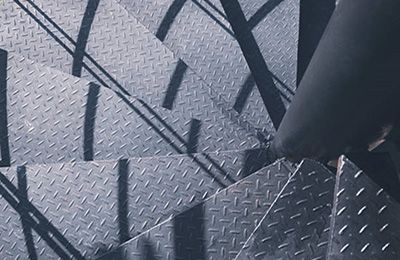
Anti-slip or trip items
- anti-slip surface treatment
- anti-slip treading or matting, safe check plates, treading or capping
- retractable hoses/leads
- retractable steps/stairs
- stair nosing
- industrial cable management systems (construction cable stands, industrial cable protectors, construction cable management systems)
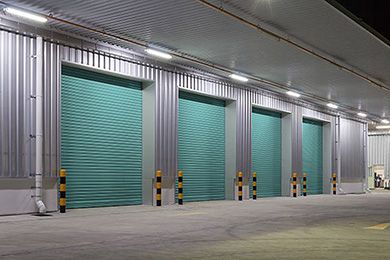
Improving working environment
- lighting - fixed entry or exit lighting or external security lighting on commercial premises*
- portable or battery-powered lighting, for example for construction or agriculture*
*Does not include decorative lighting or interior lighting.
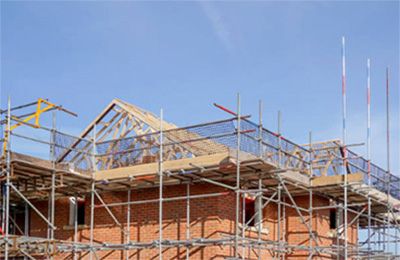
Falls from a height
- barriers (physical restraint) and guard railing system including edge protection, rails, screens, pit covers, open penetration and void protection
- bottom fill equipment for fuel tanks
- extension poles/equipment for working at heights, for example poles and water jets
- ladders, for example fixed access, step and full length
- scaffolding, fencing (portable and lightweight)
- silo safety lid
- electric tarpaulin systems for heavy vehicle trailers
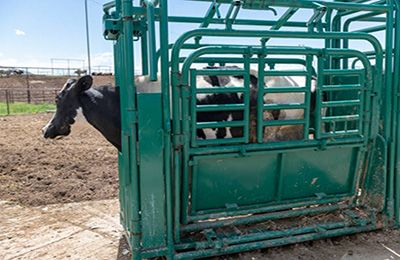
On a farm
animal management devices
Examples include:
- sliding segregation gate for livestock
- cattle crush
- lamb marking cradle
- head bales
- calf puller
- cattle panels
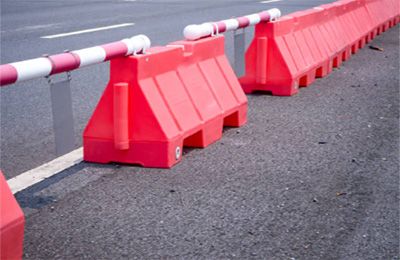
On the job site
- protective structures for falling objects
traffic management tools - bollards, cones, barricades, convex mirrors.
Examples include:
- access ramps
- elevated walkway
- pedestrian crossing gates
- visual warning and signal systems
- aerial line markers/power line markers
- telegraph pole/electrical asset protective hi-viz wraps (agricultural or construction industries)
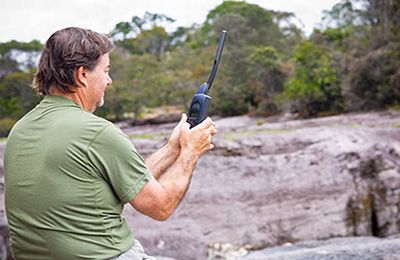
Isolated at work
- two-way (2-way) radios, emergency position-indicating radio beacon (EPIRBs) satellite phones
- personal duress alarms
site security devices and system - commercial premises only*
Examples include:
- barriers
- security screens
- security doors to prevent unauthorised access to secure work areas
*excludes Closed Circuit TV (CCTV)
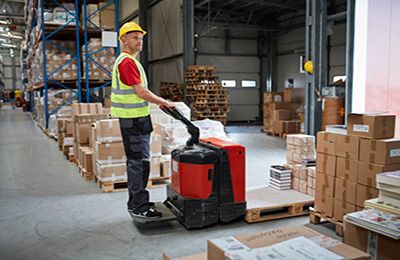
Lifting objects, people or animals
- conveyer or elevator systems
- dock leveller
lifting devices - manual, mechanical, hydraulic, vacuum or magnetic
Examples include:
- conveyor systems, for example gravity roller, motorised, belt conveyor
- drum lifters
- electric hoists
- hoists
- hydraulic lifters
- lifting hoists
- pallet rollers
- patient handling/transfer device/rescue stretcher
- tailgate lifter
- trolleys
- vacuum lifters
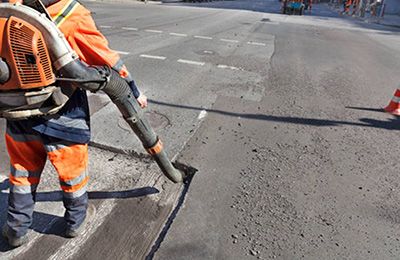
Carrying equipment and moving animals
- backpack industrial equipment, for example industrial cleaning backpack vacuum
- livestock chutes, overhead shearing equipment
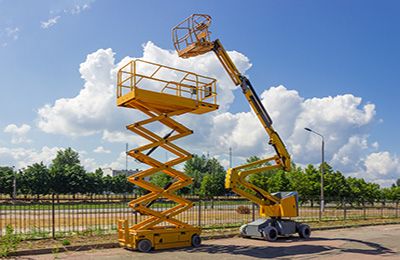
Muscle strain and stress
- work platforms – elevated/temporary, for example platform – adjustable loading
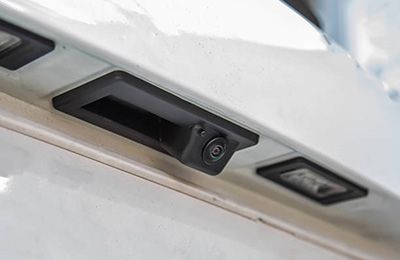
Vehicles and trucks
- guarding for tyre rim assembly/fitting
- reversing cameras (standalone only, does not include dash cams)
vehicle recovery kits/equipment including cables, chains, dampeners, dampers, kits, hitches, straps, stops, winches, wire ropes, and shackles.
Examples include:
- recovery point eg. header hitch plates or safety hitches or tow points
- recovery cable (compliant with AS3569)
- recover chains (compliant with AS3569)
- recovery dampeners
- recovery dampers
- recovery kit
- recovery point, for example header hitch plates or safety hitches
- recovery straps (compliant with AS1353.1 & AS1353.2) A63
- recovery strops
- recovery winch (compliant with AS3569)
- recovery wire rope (compliant with AS3569)
shackles (compliant with AS2741) for bogged vehicle/machinery recovery - soft shackles for bogged vehicle/machinery recovery
- warning and safety lights for traffic management
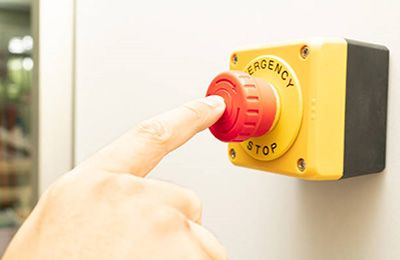
Machinery
- emergency stop buttons, for example alarm or shut down device
- Lockout Tagout (LOTO) kits/software management tool for LOTO kits (not including maintenance/annual fees/licencing)
- machine guarding including fixed, interlocked, photoelectric and combination
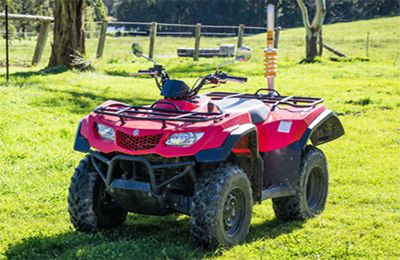
On the farm
- platforms/steps (portable)
- power take-off guards for tractors
- quad bike safety: Operator Protective Devices (OPDs)/Roll bars (ATV Lifeguard: www.atvlifeguards.com, Quadbar Flexi™: www.quadbar.com)
- quad bike/side-by-side vehicle (SSV) safety: protective helmets must be compliant with AS/NZS 1698:2006, UNECE22.05 or NZS 8600:2002
- rollover protective structures (ROPs) for tractors
- runover protective devices (tractors)
- safety bar for wool press
Hazardous noise, chemicals and sun exposure
Too much exposure to noise at work can lead to temporary or permanent hearing loss. There are many controls you can put in place to protect workers from exposure to hazardous noise.
Harmful exposure to chemicals can be prevented. Without the proper handling and storage of chemicals, exposure can cause life threatening harm as well as other injuries.
Risks from heat and UV exposure for outdoor workers can be reduced. When planning working in hot conditions consider working under shade and shelter, rotating tasks, scheduling work to cooler times of the day, and providing personal protective equipment and water.
Choose items from the list below.
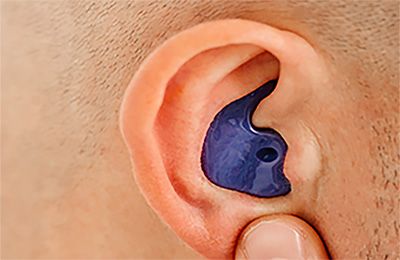
Hazardous noise
- specialised personal hearing protectors as part of a hearing conservation program (AS/NZS 1270), for example specialised earmuffs or ear plugs (not in ear monitors)
- intake/exhaust system mufflers for air tools/machinery
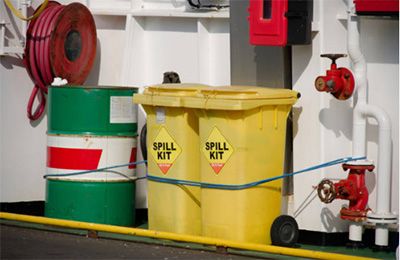
Chemicals and dangerous goods
- air filtering systems for machinery, for example exhaust extraction system for a silica dust vacuum or a ventilation/exhaust system for hazardous chemicals (not air purifiers)
- bunding or spill kit containment systems
- chemical/dangerous goods (DG) storage cabinets (ANZS standard compliant)
- chemical delivery dispensing and/or siphoning system - closed and automatic
- dust suppression attachments for tools or machinery, for example water fed attachment for a grinder or polisher
- powered air purifying respirator AS/NZS1716 compliant
- vacuum cleaner – asbestos and hazardous dust with dust class level ‘H’ or “M” filter compliant with AS 60335.2.69:2003
- wire mesh secured enclosure for chemical storage
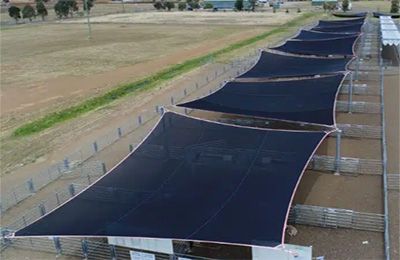
Sun exposure
- sunshade protection structures for rural and outdoor work areas including vehicle mounted awning and portable gazebo*
*excludes temperature control equipment – such as air conditioners.
List by A-Z
This A-Z list specifies individual items that are available under the small business rebate program.
Some items come under a broader category. The broader category you will need to use on your application form for a specific item will be identified where applicable.
Aerial line markers/power line markers
Air filtering systems for machinery, for example exhaust extraction system for a silica dust vacuum or a ventilation/exhaust system for hazardous chemicals (not air purifiers)
Animal management devices eg. sliding segregation gate for livestock, cattle crush, lamb marking cradle, head bales, calf puller
Anti-slip and surface treatment (AS4586 compliant)
Anti-slip treading or matting, safe check plates, treading or capping
Backpack industrial equipment
Barriers (physical restraint) and guard railing system e.g. edge protection, rails, screens, pit cover, open penetration, void protection
Bottom fill equipment for fuel tanks
Bunding for spills containment
Chemical delivery and dispensing and/or siphoning system – closed and automatic
Chemical/dangerous goods (DG) storage cabinets (ANZS standard compliant)
Conveyer or elevator systems
Dock leveller
Drum lifters (online application form description - Lifting devices - Manual, mechanical, hydraulic, vacuum, or magnetic)
Dust suppression attachments for tools or machinery (eg. water fed attachment for a grinder or polisher)
Electric hoists (online application form description - Lifting devices - Manual, mechanical, hydraulic, vacuum, or magnetic)
Electrical asset/telegraph pole protective hi-viz wraps (agricultural or construction industry)
Emergency position-indicating radio beacons (EPIRBs) (online application form description - Two-way (2-way) radios, EPIRBs, satellite phone)
Emergency stop buttons
Extension poles/equipment for working at heights e.g. poles, water jets
External security lighting
Exhaust system mufflers for air tools/machinery (online application form description - Intake/exhaust system mufflers for air tools/machinery)
Fencing (portable and lightweight) (online application form description - Scaffolding, fencing (portable and lightweight)
Gates – sliding segregation gates for livestock (online application form description - Animal management devices e.g., sliding segregation gate for livestock, cattle crush, lamb marking cradle, head bales, calf puller, cattle panels)
Gazebo (online application form description - Sunshade protection structures for rural and outdoor work areas including vehicle mounted awning and portable gazebo)
Guard railing system or barrier (physical restraint) (online application form description - Barriers (physical restraint) and guard railing system including edge protection, rails, screens, pit covers, open penetration and void protection)
Guarding for tyre rim assembly/fitting
Helmet for quad bike/Side-by-Side Vehicle (SSV) safety (online application form description - Quad bike/side-by-side vehicle (SSV) safety: protective helmets compliant with AS/NZS 1698:2006, UNECE22.05 or NZS 8600:2002)
Hoists (online application form description - Lifting devices - Manual, mechanical, hydraulic, vacuum, or magnetic)
Hoses (retractable) (online application form description - Retractable hoses/leads)
Hydraulic lifters (online application form description - Lifting devices - Manual, mechanical, hydraulic, vacuum, or magnetic)
Industrial cable management systems (e.g. construction cable stands, industrial cable protectors, construction cable management systems)
Intake/exhaust system mufflers for air tools/machinery
Ladders (online application form description - Ladders e.g., fixed access, step and full length)
Leads (retractable) (online application form description - Retractable hoses/leads)
Lifting devices – manual, mechanical, hydraulic, vacuum or magnetic
For example:
- conveyor systems e.g. gravity roller, motorised, belt conveyor
- drum lifters
- electric hoists
- hoists
- hydraulic lifters
- lifting hoists
- pallet rollers
- patient handling/transfer device/rescue stretcher
- tailgate lifter
- trolleys
- vacuum lifters
Lifting hoists (online application form description - Lifting devices - Manual, mechanical, hydraulic, vacuum, or magnetic)
Lighting – fixed entry or exit lighting or external security lighting on commercial premises*. Portable or battery-powered lighting (eg for construction or agriculture) *Does not include decorative lighting or interior lighting.
Livestock chutes, overhead shearing equipment
Lockout Tagout (LOTO) kits/software management tool for LOTO kits (not including maintenance/annual fees/licencing)
Machine guarding including fixed, interlocked, photoelectric or combination
Machinery/Plant – alarm or shut down device (online application form description - Emergency stop buttons)
Operator Protective Devices (OPDs)/Roll bars for quad bike safety (online application form description - Quad bike safety: Operator Protective Devices (OPDs)/Roll bars (ATV Lifeguard and Quadbar Flexi™))
Pallet rollers (online application form description - Lifting devices - Manual, mechanical, hydraulic, vacuum, or magnetic)
Patient handling/transfer device/rescue stretcher (online application form description - Lifting devices - Manual, mechanical, hydraulic, vacuum, or magnetic)
Pedestrian crossing gates (online application form description - Traffic management tools – bollards, cones, barricades, convex mirrors)
Personal duress alarms
Platforms/steps (portable)
Platform – adjustable loading (online application form description - Work platforms – elevated/temporary)
Power take-off guards for tractors
Powered Air Purifying Respirator AS/NZS1716 compliant
Power line markers/aerial line markers
Protective structure for falling objects
Radios (2-way; VHF-UHF) (online application form description - Two-way (2-way) radios, EPIRBs, satellite phone)
Ramps (access) (online application form description - Traffic management tools – bollards, cones, barricades, convex mirrors)
Recovery cable (compliant with AS 3569) (online application form description - Vehicle recovery kits/equipment including cables, chains, dampeners, dampers, kits, hitches, straps, stops, winches, wire ropes, and shackles)
Recovery chains (compliant with AS 3569) (online application form description - Vehicle recovery kits/equipment including cables, chains, dampeners, dampers, kits, hitches, straps, stops, winches, wire ropes, and shackles)
Recovery dampeners (online application form description - Vehicle recovery kits/equipment including cables, chains, dampeners, dampers, kits, hitches, straps, stops, winches, wire ropes, and shackles)
Recovery dampers (online application form description - Vehicle recovery kits/equipment including cables, chains, dampeners, dampers, kits, hitches, straps, stops, winches, wire ropes, and shackles)
Recovery kit (online application form description - Vehicle recovery kits/equipment including cables, chains, dampeners, dampers, kits, hitches, straps, stops, winches, wire ropes, and shackles)
Recovery point eg. header hitch plates or safety hitches or tow points (online application form description - Vehicle recovery kits/equipment including cables, chains, dampeners, dampers, kits, hitches, straps, stops, winches, wire ropes, and shackles)
Recovery straps (compliant with AS 1353.1 & AS 1353.2) (online application form description - Vehicle recovery kits/equipment including cables, chains, dampeners, dampers, kits, hitches, straps, stops, winches, wire ropes, and shackles)
Recovery strops (online application form description - Vehicle recovery kits/equipment including cables, chains, dampeners, dampers, kits, hitches, straps, stops, winches, wire ropes, and shackles)
Recovery winch (compliant with AS 3569) (online application form description - Vehicle recovery kits/equipment including cables, chains, dampeners, dampers, kits, hitches, straps, stops, winches, wire ropes, and shackles)
Recovery wire rope (compliant with AS 3569) (online application form description - Vehicle recovery kits/equipment including cables, chains, dampeners, dampers, kits, hitches, straps, stops, winches, wire ropes, and shackles)
Restraint supports to mount tools, cords, leads and hoses to prevent trip hazards
Reversing cameras – (standalone only-not including dash cams) (online application form description - reversing cameras)
Rollover protective structures (ROPs) for tractors
Runover protective devices (tractors)
Safety bar for wool press
Scaffolding (online application form description - Scaffolding, fencing (portable and lightweight))
Shackles (compliant with AS 2741) (for bogged vehicle/machinery recovery) (online application form description - Vehicle recovery kits/equipment including cables, chains, dampeners, dampers, kits, hitches, straps, stops, winches, wire ropes, and shackles)
Silo safety lid
Site security devices and systems* excludes Closed Circuit TV (CCTV) - Commercial premises only
*For example:
- security screens
- barriers
- security doors to prevent unauthorised access to secure work areas
Soft shackles (for bogged vehicle/machinery recovery) (online application form description - Vehicle recovery kits/equipment including cables, chains, dampeners, dampers, kits, hitches, straps, stops, winches, wire ropes, and shackles)
Spill kits containment system (online application form description - Bunding or spill kit containment systems)
Stair treads or capping (online application form description - Anti-slip treading or matting, safe check plates, treading or capping)
Stair nosing
Steps/stairs (retractable)
Sunshade protection for rural and outdoor work areas
Tailgate lifter (online application form description - Lifting devices - manual, mechanical, hydraulic, vacuum or magnetic)
Telegraph pole/electrical asset wraps, protective hi-viz (agricultural or construction industry)
Traffic management tools – bollards, cones, barricades, convex mirrors
Trolleys (online application form description - Lifting devices - Manual, mechanical, hydraulic, vacuum, or magnetic)
Vacuum cleaners (industrial backpack only) (online application form description - Backpack industrial equipment)
Vacuum cleaner - asbestos and hazardous dust with dust class level ‘H’ or “M” filter and compliant with AS 60335.2.69:2003
Vacuum lifters (online application form description - Lifting devices - Manual, mechanical, hydraulic, vacuum, or magnetic)
Ventilation, exhaust or extraction systems (online application form description - Air filtering systems for machinery e.g. exhaust extraction system for a silica dust vacuum or a ventilation/exhaust system for hazardous chemicals (not air purifiers))
Visual warning and signal system
Walkway (elevated) - pedestrian safety (online application form description - Traffic management tools – bollards, cones, barricades, convex mirrors)
Wire mesh secured enclosure for chemical storage
Work platforms – elevated/temporary